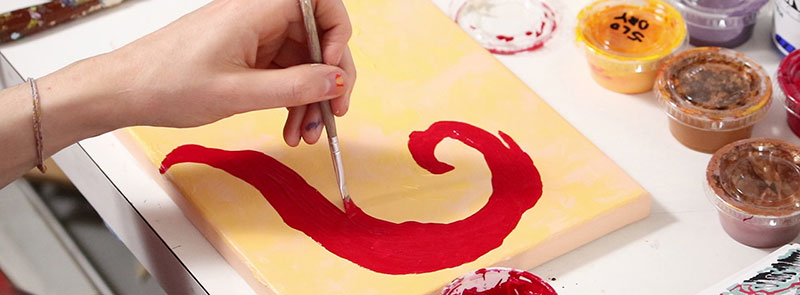Prompt
- Draw a portrait based on the sensory experience of touching your face.
- Include the neck and some of the shoulders.

Hand movements
- Consider in advance the type of hand movements you want to use on your face.
- The movements can be totally random, spontaneous, and haphazard.
- Do you want the movements to be slow? Fast?
- A more structured approach can be taken by looking at facial massage diagrams to get ideas.
Examples
Scale
- Draw the head about life size.
- Smaller than life size will limit what you can do with your marks.
Inspiration
Start
- Draw 5 gesture drawings, about 5 min. each.
- Make each gesture drawing as different as possible, by experimenting marks and direction of your strokes.
- End with one sustained drawing, minimum 30 min. where you can layer and build upon your marks.
Tips
- Remember, you are drawing a portrait, not a self-portrait.
- Your face is simply a reference, so don’t try to achieve a likeness of yourself, or even think about the portrait as being you.

Inspiration
Frank Auerbach, Diane Victor, Alberto Giacometti, Max Beckmann
Physical pressure
- Consider the physical pressure of your hands, are you pressing very hard into your face, or are you barely touching the surface?
- The movements of your hand can have a lot of personality, is the movement intense and aggressive, or are they light and subtle?
Skull Structure
- Think about the structure of the skull, what parts of your face do you feel the skull right under the skin? Which parts have more muscle and fat?
- Ask yourself how much parts of your face protrude. Some parts are very pronounced, (cheekbones) while others are hollow (eye sockets) and others are very shallow. (temple)
drawing media
- Use any drawing media!
- See our overview of drawing supplies to get ideas from our Drawing Curriculum.
Artistic Anatomy Lecture: The Face
This video explains how to the structure of the head and neck are organized. All of the major bony landmarks are covered, as well as how to identify them on a person.
In addition to explaining how to articulate bones like the mandible, the zygomatic arch, etc., this lecture shows how to group these bones together to create a convincing portrait. Lecture b
y Art Prof Clara Lieu.
- Watch the 3 min. version
- Watch the 21 min. version
- Video walkthrough & more
- Slideshow
Draw a Skull Inside a Portrait
Drawing a skull inside a portrait is a terrific exercise to practice your anatomical understanding of a portrait. This video provides beginning to end, the entire process for building the skull structure into the portrait.
Various techniques are explained, that can be used to build up three dimensional volume with colored pencil layering, blending, creating a diverse range of textures and marks, pencil grip, and more.
Demo by Art Prof Clara Lieu.





